Balkinization
an unanticipated consequence of
Jack M. Balkin
Balkinization Symposiums: A Continuing List
E-mail:
Jack Balkin:
jackbalkin at yahoo.com
Bruce Ackerman
bruce.ackerman at yale.edu
Ian Ayres
ian.ayres at yale.edu
Corey Brettschneider
corey_brettschneider at brown.edu
Mary Dudziak
mary.l.dudziak at emory.edu
Joey Fishkin
joey.fishkin at gmail.com
Heather Gerken heather.gerken at yale.edu
Abbe Gluck abbe.gluck at yale.edu
Mark Graber
mgraber at law.umaryland.edu
Stephen Griffin
sgriffin at tulane.edu
Jonathan Hafetz
jonathan.hafetz at shu.edu
Jeremy Kessler
jkessler at law.columbia.edu
Andrew Koppelman
akoppelman at law.northwestern.edu
Marty Lederman
msl46 at law.georgetown.edu
Sanford Levinson
slevinson at law.utexas.edu
David Luban
david.luban at gmail.com
Gerard Magliocca
gmaglioc at iupui.edu
Jason Mazzone
mazzonej at illinois.edu
Linda McClain
lmcclain at bu.edu
John Mikhail
mikhail at law.georgetown.edu
Frank Pasquale
pasquale.frank at gmail.com
Nate Persily
npersily at gmail.com
Michael Stokes Paulsen
michaelstokespaulsen at gmail.com
Deborah Pearlstein
dpearlst at yu.edu
Rick Pildes
rick.pildes at nyu.edu
David Pozen
dpozen at law.columbia.edu
Richard Primus
raprimus at umich.edu
K. Sabeel Rahman
sabeel.rahman at brooklaw.edu
Alice Ristroph
alice.ristroph at shu.edu
Neil Siegel
siegel at law.duke.edu
David Super
david.super at law.georgetown.edu
Brian Tamanaha
btamanaha at wulaw.wustl.edu
Nelson Tebbe
nelson.tebbe at brooklaw.edu
Mark Tushnet
mtushnet at law.harvard.edu
Adam Winkler
winkler at ucla.edu
Compendium of posts on Hobby Lobby and related cases
The Anti-Torture Memos: Balkinization Posts on Torture, Interrogation, Detention, War Powers, and OLC
The Anti-Torture Memos (arranged by topic)
Recent Posts
Just A Few Blogs
ACS Blog
Alas, a Blog
Althouse
Arts and Letters Daily
Atrios (Eschaton)
Bill of Health
Buzzflash.com
Buzz Machine
Cato at Liberty
Juan Cole (Informed Comment)
Concurring Opinions
The Constitution in 2020
Corrente
Crooked Timber
Daily Howler
Daily Kos
Dana Boyd
Brad DeLong
Digby (Hullabaloo)
Discriminations
Daniel Drezner
Kevin Drum (Mother Jones)
Electrolite
En Banc
Eunomia (Daniel Larison)
Fafblog
Michael Froomkin (Discourse.net)
GovLab (Beth Noveck)
Rick Hasen (Election Law)
History News Network
How Appealing
Ignatz (Sam Heldman)
The Importance of (Ernie Miller)
Infolaw
Instapundit
International Economic Law and Policy Blog
IntLawGrrls
Jacob Levy
Jesus' General
Jurisdynamics
The Kitchen Cabinet
Mark Kleiman
Law Blog Central
Larry Lessig
Lawyers, Guns and Money
Liberal Oasis
Brian Leiter's Law School Reports
The Leiter Reports
Marginal Revolution
Megan McArdle
Memeorandum
Metafilter
Mirror of Justice
The New Republic
Newseum
No More Mister Nice Blog
Brendan Nyhan
Opinio Juris
Orcinus
The Originalism Blog
Pandagon
Passport (Foreign Policy)
Overcoming Bias
Political Animal (Washington Monthly)
Political Theory Daily Review
Political Wire (Taegan Goddard)
The Poor Man
Virginia Postrel
Prawfsblawg
Public Reason
Jonathan Rauch
Raw Story
Redstate
ReligiousLeftLaw.com
Reporters Committee For Freedom of the Press
Reproductive Rights Blog
Rothman's Roadmap to the Right of Publicity
SCOTUS Blog
Seeing the Forest
Clay Shirky
The Shifted Librarian
The Situationist
Larry Solum (Legal Theory)
Andrew Sullivan
Talking Points Memo
Talk Left
Tapped
Tbogg
TechPresident
The Paper Chase (Jurist)
Tom Paine
Tom Tomorrow (This Modern World)
Eve Tushnet
Uggabugga
University of Chicago Law School Faculty Blog
Unqualified Offerings
The Volokh Conspiracy
War and Piece (Laura Rozen)
Wampum
Oliver Willis
Wonkette
Written Description
Matthew Yglesias
Yin
Your Choice of Feeds
1. XML
powered by
2. Atom Feed
3. RSS 2.0
JB
Why the "Ten Percent Solution" isn't Colorblind
President Bush has decided to weigh in on the side of the plaintiffs in the Michigan affirmative action case now before the U.S. Supreme Court, and is widely expected to tout Texas' "Ten Percent Solution" as an alternative to race-conscious affirmative action.
In response to the Hopwood decision, which barred the University of Texas from using race as a factor in law school admissions, the Texas Legislature passed a bill providing that Texas students in the top ten percent of their graduating high school classes shall be admitted automatically to any Texas state university for college education without consideration of standardized test scores. See Tex. Educ. Code Ann. § 51.803(a). The "Ten Percent Plan" trades on the fact that students in Texas attend ethnically segregated schools; the Legislature hoped that it would compensate in part for the predicted loss in minority enrollments that would occur when diversity-based affirmative action plans were no longer permissible.
The ten percent plan has its share of problems. First, it doesn't work in states that are not strongly de facto segregated in secondary education. Second, it does little to promote diversity in graduate and professional schools. One can try to award spots in graduate and professional schools to students from traditionally black colleges, but ultimately the effect is not the same as occurs in college admissions.
These two problems suggest why the plan may not maintain diversity. But the third problem is quite different. It is that it the Ten Percent solution isn't really consistent with the colorblind philosophy that many opponents of race-conscious remedies claim to support.
The Ten Percent solution is not in fact colorblind, and it is inconsistent with the political, moral and constitutional arguments for colorblindness generally offered by opponents of race-conscious affirmative action. Indeed, support for such a plan among opponents of affirmative action reveals the basic problem with colorblindness as a theory of equality: Colorblindness taken seriously leads to unpalatable results that most Americans would reject as undesireable, unequal, and unfair.
There is no question that the Ten Percent solution is a race conscious remedy. The avowed purpose of the Ten Percent solution is to increase minority enrollments at Texas state universities. If race-consciousness means taking race into account in government decisionmaking, the ten percent plan is clearly race conscious.
One might object that colorblindness merely means that the policy may not mention race on its face or make explicitly racial categories. But that undermines the moral case for colorblindness, making it only a fig leaf for otherwise unconstitutional motivation. The Supreme Court has wisely never adopted this view. It matters not whether the language of the plan is facially neutral if a racially discriminatory purpose for enacting the policy can be shown. Consider a state policy that was neutral on its face but could be shown to have been put in place specifically to increase the number of whites attending Texas state universities. Under Croson and Adarand, goverment policies that discriminate against whites must be viewed with the same degree of suspicion as policies that discriminate against blacks. If a purpose to increase white enrollments could be found, the policy would be unconstitutional under Washington v. Davis. By the same logic, so would a policy whose deliberate purpose was to increase black and Latino enrollments.
One might object to this line of reasoning as follows: The Ten percent solution does not discriminate *against* whites, it only discriminates *in favor of* blacks and Latinos. In support of this argument, one might cite the Feeney case, which says that discrimination must be because of rather than in spite of the effects on a particular group. But such an argument will be unavailing, for one could then argue that policies specifically designed to increase white enrollments were constitutional because they were not discrimination against blacks and Latinos, but only in favor of whites.
I would submit that the Ten percent solution is attractive to many people precisely because it *does* take race into account, and leads to a predictable supply of minority candidates without formally saying the magic words in the language of the statute. And it is more palatable because it organizes the method of selection at the group level rather than at the individual level. Because it is predictable that the top students at de facto segregated schools will be black or Latino, it is unnecessary to take their individual race into account in admitting them. This preserves the illusion that everyone is treated as an individual, not as a member of a group, and is treated the same regardless of their race. But that illusion is only made possible by fixing the rules of the game beforehand with a deliberate eye to the predicted racial balance of the incoming class. You can call this a lot of things, but colorblind is not one of them.
Posted 4:21 PM by JB [link] (6) comments
JB
Mickey in Chains
The Supreme Court has decided Eldred v. Ashcroft, which, by a vote of 7-2, upholds the Sony Bono Act. You can get the opinions from Lawmeme, the Information Society Project's blog on Internet issues, here.
I helped write a constitutional law professors' amicus brief on the First Amendment issues, and I'll have more to say about the first amendment questions-- which were quite poorly addressed in the majority opinon-- later on.
Posted 1:15 PM by JB [link] (7) comments
JB
Thoughts on Roe v. Wade, Part II
Roe and the Party System– Or, Why Hasn’t Roe v. Wade Already Been Overruled?
This is the second in a series of posts on the thirtieth anniversary of the Supreme Court’s decision in Roe v. Wade.
I left off my last post by pointing out that Roe v. Wade helped produce the contemporary Republican Party. The Republican Party has had great success since 1968 in winning Presidential elections, and hence in appointing judges. For example, as I like to point out to my students, the Democrats didn’t get a single Supreme Court appointment between 1967 (which Thurgood Marshall replaced Tom C. Clark) and 1994, when Clinton nominated Ruth Bader Ginsburg. Think about that-- 27 years of Republican Supreme appointments. This has had an effect on constitutional doctrine in a number of areas, including, most importantly criminal procedure. But it has not been sufficient to get rid of Roe v. Wade.
Given Republican dominance on the Supreme Court, what explains the fact that Roe v. Wade is still standing?
The answer to this question is quite complicated, and involves a number of different factors, all of which revolve around the party system in the United States.
(1) The first factor is the changing nature of the Republican Party and of the background assumptions of American politics. We must to remember that the Republican Party of 1969 was not the same as the Republican Party of 2003. In 1968, the Republicans retook the White House at the apex of Democratic liberalism. The Congress was still heavily controlled by Democrats, and liberal ideas were still very much dominant. As a result, mainstream Republicans routinely took positions that today seem quite moderate, if not outright liberal. It was not until the 1976 convention that the Reagan forces began their ascent towards remaking the Republican Party in their own image, although Reagan does not capture the nomination until 1980.
Nixon had won the Presidency because George Wallace helped break apart the Democratic coalition that produced a landslide in 1964. The liberal Democrats in Congress hated Nixon and believed that he had not deserved to win. Because Nixon had run in 1968 against the Warren Court, Democrats were determined not to allow him to appoint new Justices who were too conservative. Indeed, the political science literature indicates that when the President is of one party and the Senate is controlled by another, Supreme Court appointments tend to be more moderate. Given that the Dems were on the warpath because of the close 1968 election this factor was particularly relevant. The Democrats beat back two of Nixon’s earlier appointments, Haynesworth and Carswell, sending a strong signal that Nixon would have considerable difficulty in appointing a strongly conservative candidate.
The first successful Republican appointments to the Supreme Court following the 1968 election reflect these political realities. Burger and Blackmun replace Warren and Fortas, clearly a move to the right. However, Burger and Blackmun were not movement conservatives in the modern sense, and actually proved quite moderate on some issues. Burger, after all, wrote Griggs v. Duke Power, which interpreted Title VII to reach disparate impact in addition to disparate treatment. He also created the Establishment Clause test in Lemon v. Kurtzman, the bete noir of today’s religious conservatives. Burger and Blackmun were reliably conservative on criminal procedure, but Burger joined Roe and Blackmun, of course, wrote the majority opinion in Roe.
Lewis Powell, who replaced Hugo Black, was also a comparative moderate by today’s standards. He also joined Roe and generally was a supporter of the basic abortion right. The only true movement conservative was William Rehnquist, who was the original “stealth” Justice, appointed as a virtual unknown. Gerald Ford’s single Supreme Court appointment, John Paul Stevens, was a Republican moderate who proved to be a reliable vote for abortion rights.
(2) Second, it’s important to recognize that the Republican Party had not become dominated by pro-life forces until Reagan. In fact, in the 1976 election the Republican Gerald Ford was probably more of a pro-choice candidate than the Democrat Jimmy Carter, an evangelical and born again Christian. Carter was in fact pro-life in 1976, but mostly kept quiet about it. Plenty of politicians in both parties supported abortion rights in 1973, and support was particularly strong among educated elites. It’s not surprising, then that of the five Republican appointments during the Nixon and Ford Administrations, four of those (Burger, Blackmun, Powell, and Stevens) supported the basic right in Roe.
In fact, the only two dissenters in Roe were Rehnquist, a statist conservative, and Byron White, a Kennedy Democrat who was put on the Court to defend national power against state power, protect black civil rights, and defer to legislatures in social and economic legislation. That’s pretty much what he did throughout his career. Note as well that if the New Deal Democrat Hugo Black had remained on the Court for two more years, he would probably have voted the same way that Rehnquist did.
Only after Reagan’s election in 1980 did the Republican Party become a recognizably pro-life party. Reagan’s appointments reflect both his strong political values and the political realities of his time. Reagan’s appointments primarily reflected his interest in state’s rights and federalism and his opposition to affirmative action, and his three appointments (O’Connor, Scalia, and Kennedy) have been fairly reliable on those issues. In 1982, Reagan’s popularity was not as strong as we remember it today; His choice of O’Connor, the first woman Justice, was designed to reduce opposition and signal that he would not necessarily appoint the most doctrinaire conservatives available. After the 1984 landslide, Republicans controlled both the Presidency and the Senate, and it is not surprising that during this period Reagan made his two most conservative appointments– appointing Antonin Scalia as Associate Justice, and elevating Rehnquist to Chief Justice. The Republicans lost the Senate in 1986, and the Iran Contra scandal weakened Reagan politically. This is one reason why Robert Bork, who was not particularly more conservative than Antonin Scalia, failed to win confirmation, and Reagan was forced to settle for the more moderate Anthony Kennedy. Kennedy has proven to be reliably conservative on federalism and affirmative action, but it seems clear that Bork would not have voted the same way on many first amendment and gay rights issues.
George H.W. Bush’s appointments also reflect Democratic control of the Senate. Souter was a stealth Justice, and Thomas almost failed to gain confirmation. Souter is often regarded as a mistake, but in fact, it seems clear in hindsight that Bush knew exactly what he was doing by appointing one pro-choice and one-pro life justice, as I will make clear in a moment.
(3) Why Republican Presidents like Roe. The contemporary Republican coalition brings together religious and social conservatives opposed to abortion with libertarians, economic conservatives, and suburbanites who may be quite moderate on abortion rights or even strongly pro-choice. In order to keep this coalition together, the Republican Party cannot have the power to make pre-viability abortion a crime either at the state or the national level. As long as pre-viability abortions are protected by Roe, that issue is off the table. What is on the table are issues where abortion regulation seems more sensible both to moderates and conservatives: restrictions on abortions for minors without parental consent, restrictions on late term abortions, restrictions on partial birth abortions, informed consent requirements, and withdrawal of federal funding for abortions.
If Roe were ever overturned, the issue of putting women and doctors in jail for performing pre-viability abortions would once again be on the table. Religious conservatives would inevitably push for much stricter regulations than moderates could stomach. The result would split the Republican coalition in half. On the other hand, with Roe on the books, the Republicans have the best of both worlds. Religious and social conservatives can fulminate against Roe all they want and moderates and libertarians are not scared off because they believe that the core holding of Roe is safe. (Note as well that this logic applies particularly to the Supreme Court and not to the lower courts. Lower court judges can be strongly pro-life, because at most they can chip away at Roe but not overrule it.).
One of the ironies of Ronald Reagan’s great skill in forming a winning coalition for the Republican Party is that it is actually in the interests of Republican presidents never to appoint a mix of Justices who will overturn Roe v. Wade. They can cut back on Roe, and even hollow it out– some people think that is exactly what the Casey opinion does– but they cannot overrule the opinion, or else they will hand the Democrats the best wedge issue they’ve had in years. From this standpoint, Souter, Kennedy, and O’Connor are every bit as important to the preservation of the Republican Party’s electoral chances as Rehnquist, Scalia, and Thomas.
This puts the 1992 Casey opinion in a very different light. Many people were surprised that three Reagan-Bush appointees reaffirmed Roe. But it seems quite clear, in hindsight, that the Justices realized that the political reaction to overruling Roe in 1992 would be quite significant. This is reflected in the joint opinion’s argument that overruling Roe would appear politically motivated or unduly influenced by politics. Ironically, the failure to overturn Roe in 1992 could also be interpreted in the same way.
What does this mean for future Supreme Court appointments? My guess is that George W. Bush will be just as canny as his father was. He will replace Chief Justice Rehnquist with an equally pro-life Justice, because that preserves the balance of power. But I don’t think he will replace O’Connor or Stevens with a Justice who would vote to overturn Roe. It’s true that even without O’Connor’s vote there are still technically five votes to uphold Roe, but Kennedy is wobbly on the issue, as judged from the late term abortion case, Stenberg v. Carhart.
Does all of this mean that the Democrats should take a fall and invite a series of pro-life appointments? If they were truly Machiavellian, I suppose they should. But I doubt they will adopt this strategy precisely because their base already fears that Congressional Democrats don’t stand up enough for core Democratic positions. And pro-life Justices are likely to be quite conservative on many other issues that Democrats care about. So my guess is that Roe will be with us for a fairly long time. It will be cut back, weakened, and enervated in countless ways, but it probably will stick around.
One thing that could significantly change the political stakes of Roe, interestingly, is not abortion. It is the policy issues posed by new forms of genetic technology, which I will discuss in a future post.
Posted 12:11 AM by JB [link] (3) comments
JB
Thoughts on Roe v. Wade, Part I
One way of understanding Roe’s place in contemporary constitutional law is by comparing it with an equally famous case, Brown v. Board of Education. Today every judicial nominee is presumed to support Brown, although nominees may differ on issues like busing or affirmative action. If asked, no judicial nominee would hesitate to state that he or she supports the decision in Brown v. Board of Education; indeed, failure to make ritual obeisance to Brown would pose a serious obstacle to any nominee’s chances at confirmation. Trent Lott had to resign as Senate Majority Leader because his comments about Strom Thurmond merely hinted that racial segregation wasn’t all that bad. By contrast, federal judicial nominees are usually coached to avoid answering questions about Roe v. Wade and abortion rights on the grounds that such issues may come before them as judges. Yet the fact that issues of race relations law may also come up before them is apparently irrelevant to their ability to endorse Brown.
The subsequent course of American politics partly explains these differences. The result in Brown was effectively ratified by Congress ten years later in the Civil Rights Act of 1964, due to the success of the Civil Rights Movement. (We also should not forget the imperatives of national foreign policy. Competing with the Soviet Union in the eyes of the Third World, Jim Crow was an embarrassment to the United States, and many foreign policy elites were only too happy to see it abolished.) Indeed, the Civil Rights Act of 1964 went even further than Brown in several respects. It prohibited both public and private discrimination, and it made enforcement of school desegregation efforts practical for the first time by threatening to withhold federal funding from schools that remained segregated.
Compliance with the Act’s ban on private discrimination in employment and public accommodations was far smoother than anyone had a right to expect, and the threat of loss of federal funding coaxed reluctant school boards in the South to begin a process of school desegregation that, in time, made parts of the South, not the North, the most desegregated areas in the country. Moreover, because members of both parties were crucial to passage of the 1964 Civil Rights Act, both parties had a stake in the legitimacy of Brown. The Civil Rights Act of 1964, in the words of Archibald Cox, made “Brown more fully law,” and led to the eventual canonization of Brown v. Board of Education that no politician could criticize and no judicial nominee could openly oppose.
Instead, people with more conservative views on race relations adopted a different strategy to articulate their values. While supporting the basic idea of racial equality in Brown, they focused on the remedial aspects of desegregation, opposing busing and other remedial measures designed to integrate schools. They raised institutional objections to desegregation, objecting to federal interference with state’s rights and judicial interference with legislative prerogatives. They interpreted Brown and the Civil Rights movement as a commitment to colorblindness, which justified their opposition to affirmative action and other race conscious remedies, while insisting that government policies that had a predictable and foreseeably disproportionate impact on racial minorities but did not make overt racial classifications did not offend the colorblindness principle. Finally, conservative politicians, following rhetorical strategies pioneered by Richard Nixon and George Wallace, accepted the basic constitutional principle of Brown while playing on racial prejudices through so-called “wedge” issues like busing, crime and welfare.
In short, after the Civil Rights Act, the political debate would be framed within the parameters set by Brown, rather than as a debate over the legitimacy of Brown itself. In important ways the Supreme Court itself promoted this result, because its most controversial desegregation decisions following Brown spoke in terms of remedies. That made it possible for critics of busing to insist that they supported the original decision in Brown but simply disagreed about the best way to enforce it.
The story of Roe v. Wade would be very different. Critics of abortion rights have not simply contented themselves with accepting Roe's legitimacy while seeking to limit it or even undermine it indirectly, although some moderates, to be sure, have adopted precisely this strategy. Rather, many politicians to this day continue to argue that Roe v. Wade was wrongly decided and should be overturned. The debate over abortion rights has not occurred merely within the framework set by Roe but has continually put the very legitimacy of the decision into question. As a result, recent debates about judicial nominations have often focused, directly or indirectly, on the continued vitality and authority of Roe.
One of the reasons why the judicial politics of Roe and Brown turned out so differently concerns social movements and their relationship to political parties. Brown occurred at the very beginning of the Civil Rights Movement, and was ratified popularly shortly before the movement’s peak. Roe, on the other hand, is the product of a groundswell of popular support for women’s rights-- remember, the decision came only one year after Congress submitted the Equal Rights Amendment to the states-- and it helped energize conservative social movements that opposed both the ERA and Roe itself. The political coalitions that form the contemporary Republican Party are due in part to Roe and its aftermath, and from 1980 onward the Republican Party platform has opposed Roe in one form or another. At the margins at least, the decision in Roe helped make Ronald Reagan president, and it helped the contemporary Republican Party define itself.
With one major political party strongly in favor of abortion rights (the Democrats), and the other major political party strongly influenced by opponents of abortion (the Republicans), it was highly unlikely that Roe would become a framework of consensus in the way that Brown did. Moreover, unlike Brown, Roe served no obvious foreign policy goals of the United States. Finally, supporters of abortion rights were not able unequivocally to claim the moral high ground in the same way that supporters of racial equality could. To the contrary, opponents of abortion continued to insist that they, and not supporters held the moral high ground. In race relations, by contrast, conservatives eventually embraced Brown and insisted that they held the moral high ground when they advocated colorblindness as the true principle behind Brown and the Civil Rights Movement.
Posted 11:26 PM by JB [link] (4) comments
JB
Roe v. Wade Thirtieth Anniversary Conference
I’m putting together a conference to commemorate the 30th anniversary of Roe v. Wade, which will be held on January 31st, 2003, from 10:30am to 5:30pm at Yale Law School. Yale Law Women, a student organization, will be co-sponsoring. The actual 30th anniversary takes place on January 22d, but that’s right in the middle of exam period here at Yale Law School, so I moved it forward to the first week of classes.
I’ve gathered together nine prominent constitutional scholars and asked them to rewrite the opinion in Roe v. Wade (and the companion case of Doe v. Bolton, which struck down Georgia’s abortion law), using only materials available as of January 22d, 1973. The opinions will be read at a mock Supreme Court starting at 1:30pm at the conference. I’ll play the role of Chief Justice, although I won’t be wearing gold stripes like Rehnquist does.
The all-start cast includes my colleagues Akhil Amar, Jed Rubenfeld and Reva Siegel from Yale, Mark Tushnet and Robin West from Georgetown, Anita Allen-Castellitto from Penn, Jeffrey Rosen from G.W. (and The New Republic), and Michael Stokes Paulsen from Minnesota. I’ll be gathering the opinions together and publishing them as a book entitled, appropriately enough, “What Roe v. Wade Should Have Said.” Cass Sunstein of the University of Chicago will also be contributing an opinion to the collection, although he won’t be able to attend the conference. I’ll also be writing a long (around 70 page) introduction to the book, describing the political and legal history of Roe and analyzing the opinions.
I’ve done something like this before with the Supreme Court’s 1954 opinion in Brown v. Board of Education. The results were published as “What Brown v. Board of Education Should Have Said: The Nation’s Top Legal Experts Rewrite America’s Landmark Civil Rights Opinion,” which was published by N.Y.U. Press in 2001. There's also a companion website, BrownvBoard.com, which has a chronology of civil rights history.
Over the course of the next few weeks I hope to post a few thoughts about Roe from the standpoint of thirty years later.
Posted 10:43 PM by JB [link] (10) comments
JB
Hi, this is the first entry in my blog.
I hope to add commentary on law, politics and culture in the coming days. Wish me luck!
Posted 3:50 PM by JB [link] (10) comments
Books by Balkinization Bloggers

Linda C. McClain and Aziza Ahmed, The Routledge Companion to Gender and COVID-19 (Routledge, 2024)

David Pozen, The Constitution of the War on Drugs (Oxford University Press, 2024)
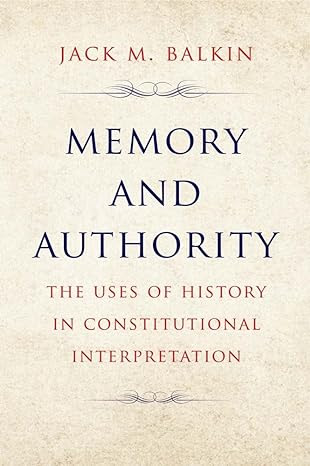
Jack M. Balkin, Memory and Authority: The Uses of History in Constitutional Interpretation (Yale University Press, 2024)

Mark A. Graber, Punish Treason, Reward Loyalty: The Forgotten Goals of Constitutional Reform after the Civil War (University of Kansas Press, 2023)
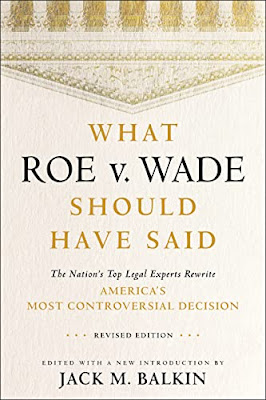
Jack M. Balkin, What Roe v. Wade Should Have Said: The Nation's Top Legal Experts Rewrite America's Most Controversial Decision - Revised Edition (NYU Press, 2023)

Andrew Koppelman, Burning Down the House: How Libertarian Philosophy Was Corrupted by Delusion and Greed (St. Martin’s Press, 2022)
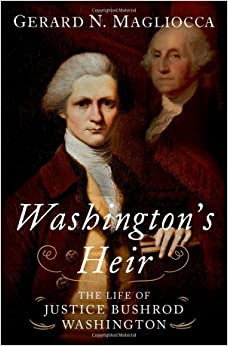
Gerard N. Magliocca, Washington's Heir: The Life of Justice Bushrod Washington (Oxford University Press, 2022)

Joseph Fishkin and William E. Forbath, The Anti-Oligarchy Constitution: Reconstructing the Economic Foundations of American Democracy (Harvard University Press, 2022)

Mark Tushnet and Bojan Bugaric, Power to the People: Constitutionalism in the Age of Populism (Oxford University Press 2021).

Mark Philip Bradley and Mary L. Dudziak, eds., Making the Forever War: Marilyn B. Young on the Culture and Politics of American Militarism Culture and Politics in the Cold War and Beyond (University of Massachusetts Press, 2021).
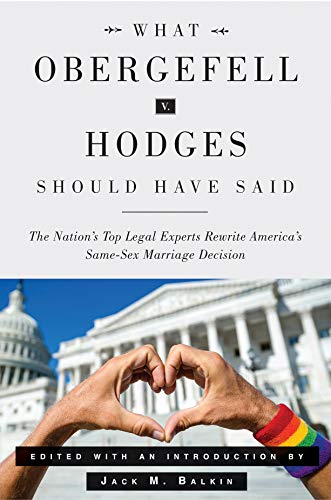
Jack M. Balkin, What Obergefell v. Hodges Should Have Said: The Nation's Top Legal Experts Rewrite America's Same-Sex Marriage Decision (Yale University Press, 2020)
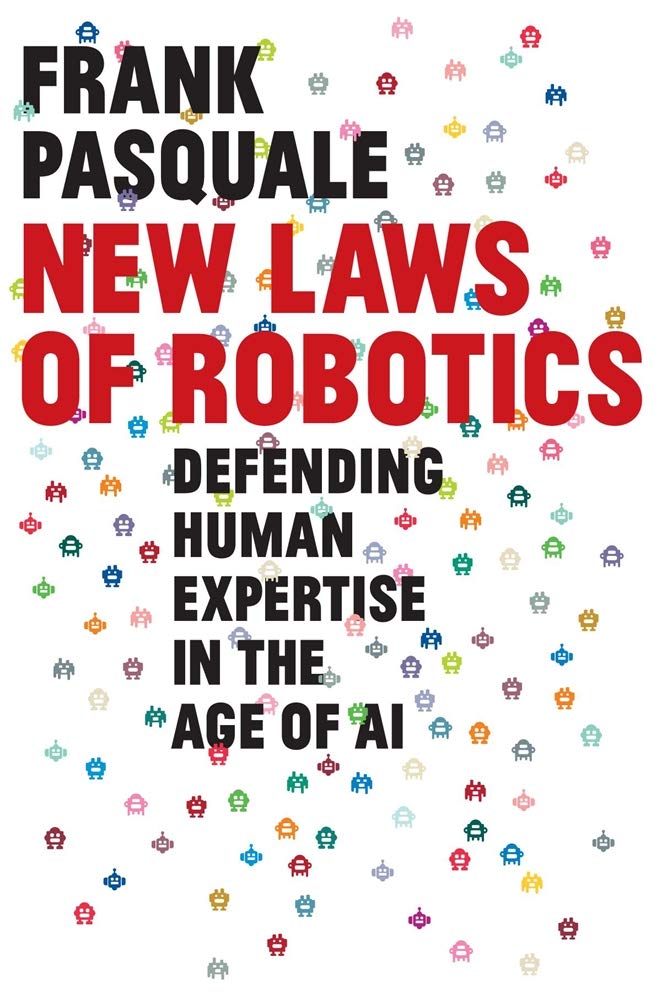
Frank Pasquale, New Laws of Robotics: Defending Human Expertise in the Age of AI (Belknap Press, 2020)
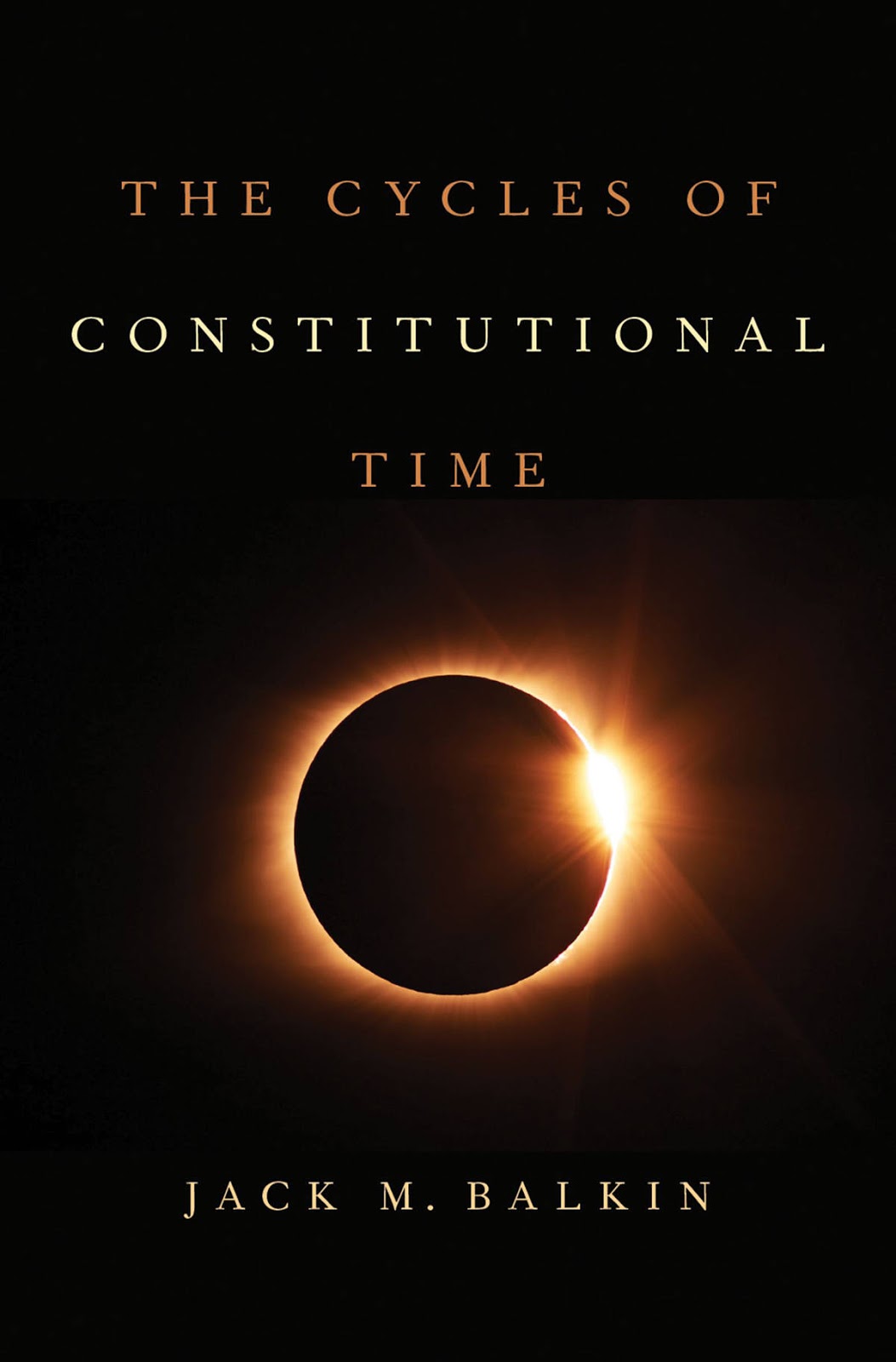
Jack M. Balkin, The Cycles of Constitutional Time (Oxford University Press, 2020)
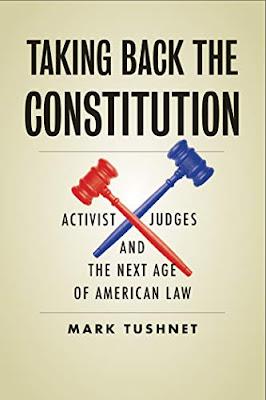
Mark Tushnet, Taking Back the Constitution: Activist Judges and the Next Age of American Law (Yale University Press 2020).

Andrew Koppelman, Gay Rights vs. Religious Liberty?: The Unnecessary Conflict (Oxford University Press, 2020)
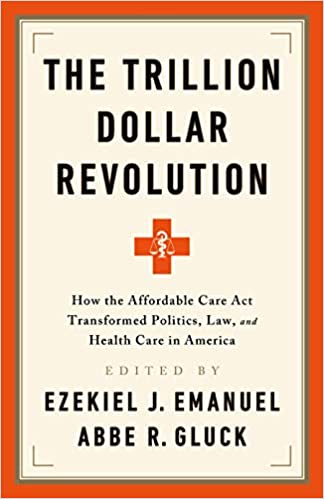
Ezekiel J Emanuel and Abbe R. Gluck, The Trillion Dollar Revolution: How the Affordable Care Act Transformed Politics, Law, and Health Care in America (PublicAffairs, 2020)
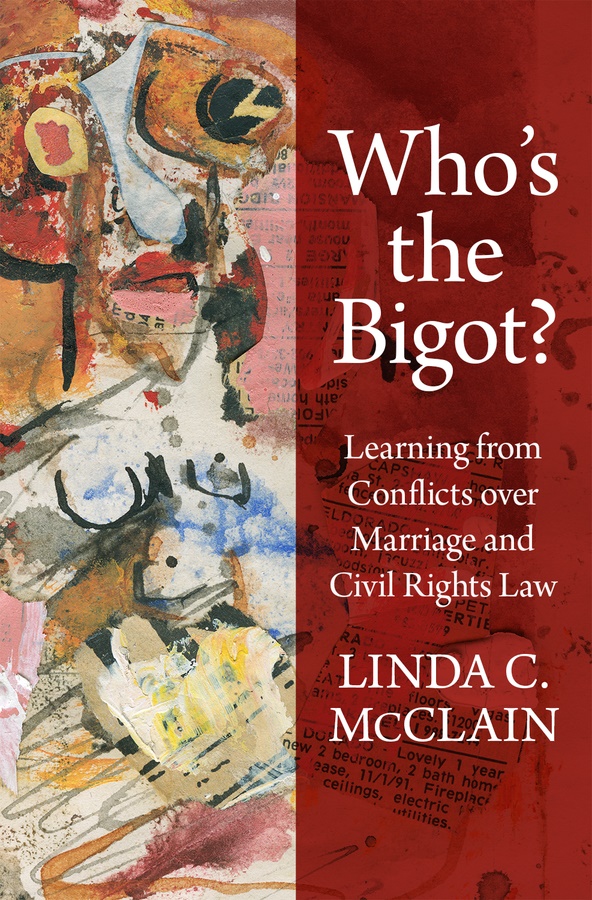
Linda C. McClain, Who's the Bigot?: Learning from Conflicts over Marriage and Civil Rights Law (Oxford University Press, 2020)
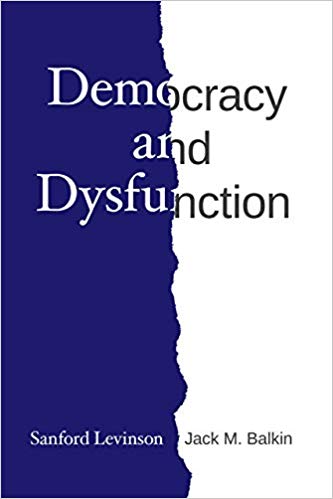
Sanford Levinson and Jack M. Balkin, Democracy and Dysfunction (University of Chicago Press, 2019)

Sanford Levinson, Written in Stone: Public Monuments in Changing Societies (Duke University Press 2018)
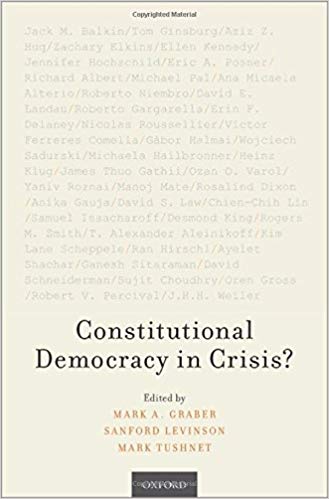
Mark A. Graber, Sanford Levinson, and Mark Tushnet, eds., Constitutional Democracy in Crisis? (Oxford University Press 2018)

Gerard Magliocca, The Heart of the Constitution: How the Bill of Rights became the Bill of Rights (Oxford University Press, 2018)
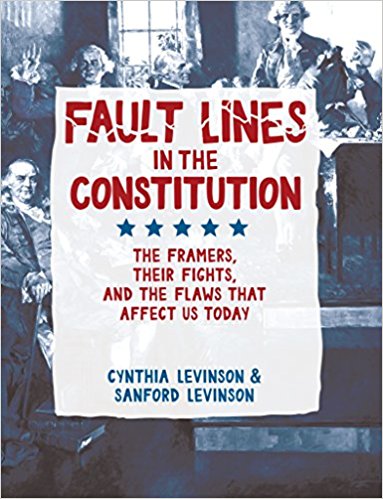
Cynthia Levinson and Sanford Levinson, Fault Lines in the Constitution: The Framers, Their Fights, and the Flaws that Affect Us Today (Peachtree Publishers, 2017)
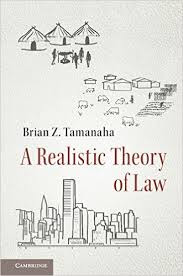
Brian Z. Tamanaha, A Realistic Theory of Law (Cambridge University Press 2017)
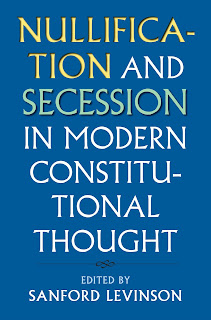
Sanford Levinson, Nullification and Secession in Modern Constitutional Thought (University Press of Kansas 2016)

Sanford Levinson, An Argument Open to All: Reading The Federalist in the 21st Century (Yale University Press 2015)
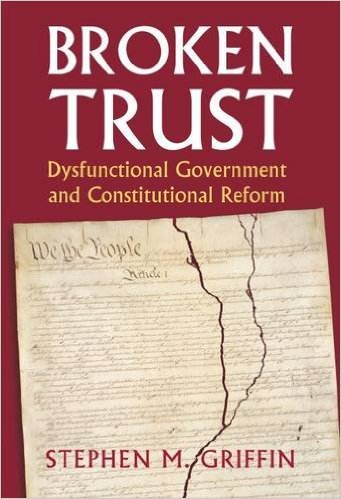
Stephen M. Griffin, Broken Trust: Dysfunctional Government and Constitutional Reform (University Press of Kansas, 2015)

Frank Pasquale, The Black Box Society: The Secret Algorithms That Control Money and Information (Harvard University Press, 2015)
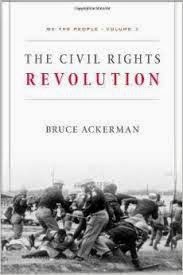
Bruce Ackerman, We the People, Volume 3: The Civil Rights Revolution (Harvard University Press, 2014)
Balkinization Symposium on We the People, Volume 3: The Civil Rights Revolution

Joseph Fishkin, Bottlenecks: A New Theory of Equal Opportunity (Oxford University Press, 2014)
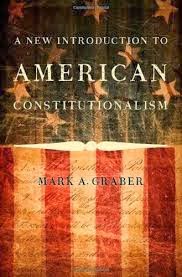
Mark A. Graber, A New Introduction to American Constitutionalism (Oxford University Press, 2013)

John Mikhail, Elements of Moral Cognition: Rawls' Linguistic Analogy and the Cognitive Science of Moral and Legal Judgment (Cambridge University Press, 2013)
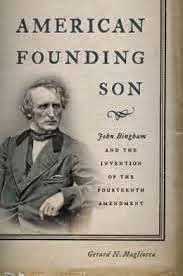
Gerard N. Magliocca, American Founding Son: John Bingham and the Invention of the Fourteenth Amendment (New York University Press, 2013)
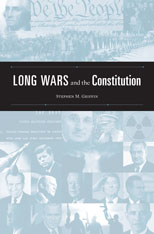
Stephen M. Griffin, Long Wars and the Constitution (Harvard University Press, 2013)

Andrew Koppelman, The Tough Luck Constitution and the Assault on Health Care Reform (Oxford University Press, 2013)

James E. Fleming and Linda C. McClain, Ordered Liberty: Rights, Responsibilities, and Virtues (Harvard University Press, 2013)
Balkinization Symposium on Ordered Liberty: Rights, Responsibilities, and Virtues

Andrew Koppelman, Defending American Religious Neutrality (Harvard University Press, 2013)
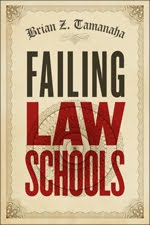
Brian Z. Tamanaha, Failing Law Schools (University of Chicago Press, 2012)
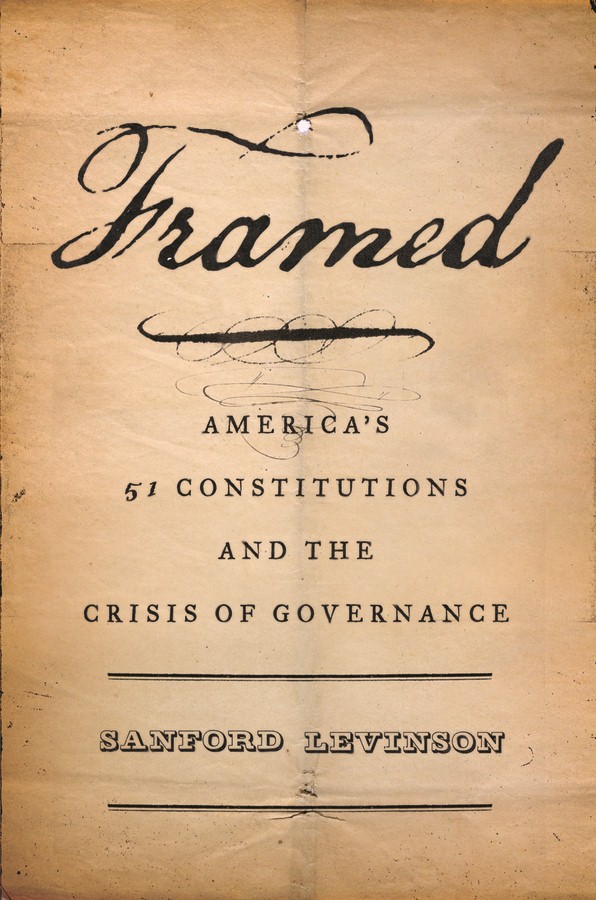
Sanford Levinson, Framed: America's 51 Constitutions and the Crisis of Governance (Oxford University Press, 2012)
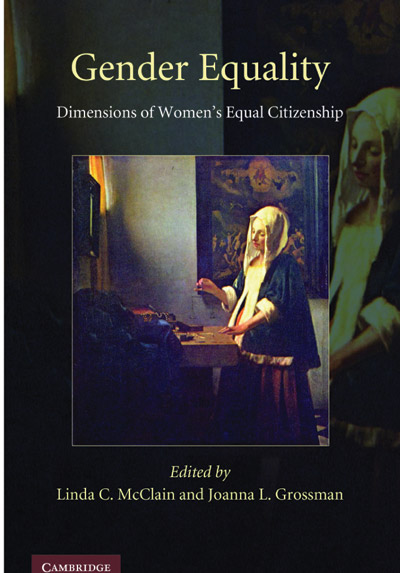
Linda C. McClain and Joanna L. Grossman, Gender Equality: Dimensions of Women's Equal Citizenship (Cambridge University Press, 2012)

Mary Dudziak, War Time: An Idea, Its History, Its Consequences (Oxford University Press, 2012)

Jack M. Balkin, Living Originalism (Harvard University Press, 2011)
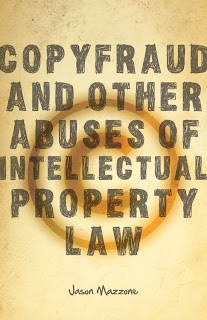
Jason Mazzone, Copyfraud and Other Abuses of Intellectual Property Law (Stanford University Press, 2011)

Richard W. Garnett and Andrew Koppelman, First Amendment Stories, (Foundation Press 2011)

Jack M. Balkin, Constitutional Redemption: Political Faith in an Unjust World (Harvard University Press, 2011)
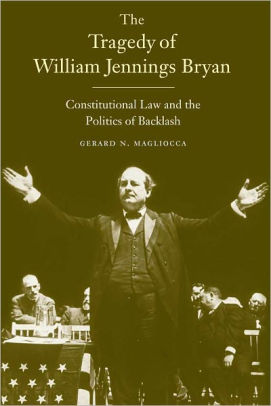
Gerard Magliocca, The Tragedy of William Jennings Bryan: Constitutional Law and the Politics of Backlash (Yale University Press, 2011)

Bernard Harcourt, The Illusion of Free Markets: Punishment and the Myth of Natural Order (Harvard University Press, 2010)

Bruce Ackerman, The Decline and Fall of the American Republic (Harvard University Press, 2010)
Balkinization Symposium on The Decline and Fall of the American Republic
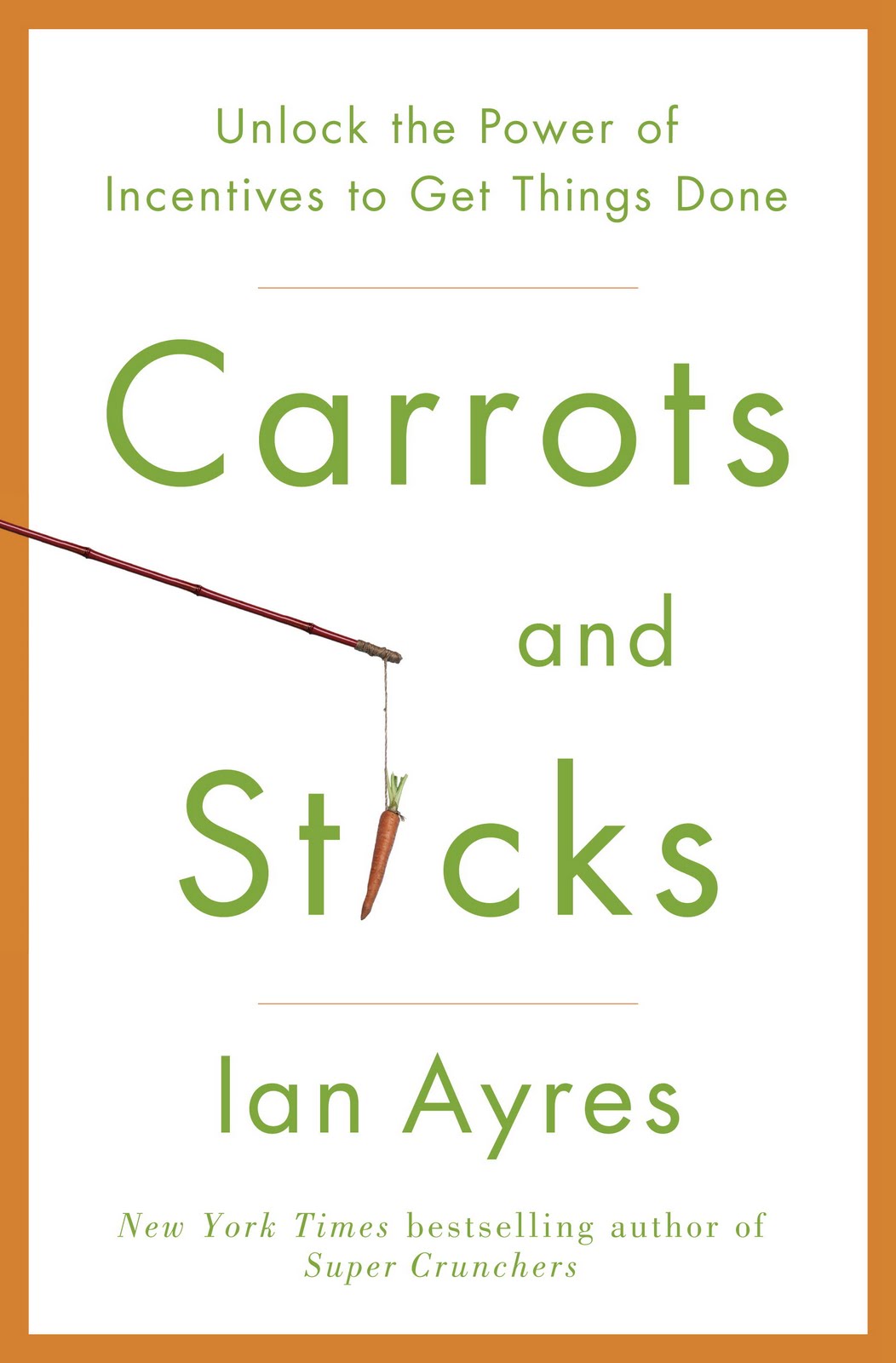
Ian Ayres. Carrots and Sticks: Unlock the Power of Incentives to Get Things Done (Bantam Books, 2010)

Mark Tushnet, Why the Constitution Matters (Yale University Press 2010)

Ian Ayres and Barry Nalebuff: Lifecycle Investing: A New, Safe, and Audacious Way to Improve the Performance of Your Retirement Portfolio (Basic Books, 2010)
.jpg)
Jack M. Balkin, The Laws of Change: I Ching and the Philosophy of Life (2d Edition, Sybil Creek Press 2009)
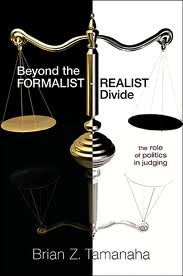
Brian Z. Tamanaha, Beyond the Formalist-Realist Divide: The Role of Politics in Judging (Princeton University Press 2009)
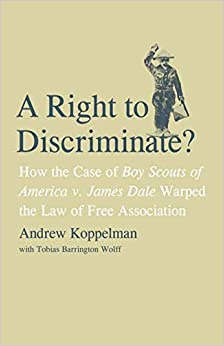
Andrew Koppelman and Tobias Barrington Wolff, A Right to Discriminate?: How the Case of Boy Scouts of America v. James Dale Warped the Law of Free Association (Yale University Press 2009)
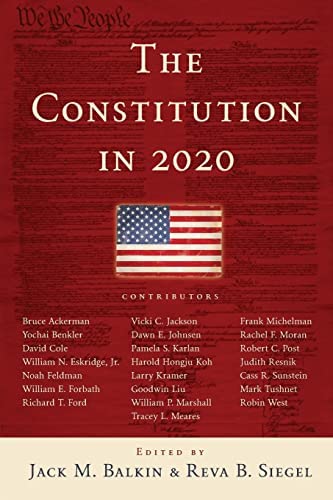
Jack M. Balkin and Reva B. Siegel, The Constitution in 2020 (Oxford University Press 2009)

Heather K. Gerken, The Democracy Index: Why Our Election System Is Failing and How to Fix It (Princeton University Press 2009)

Mary Dudziak, Exporting American Dreams: Thurgood Marshall's African Journey (Oxford University Press 2008)
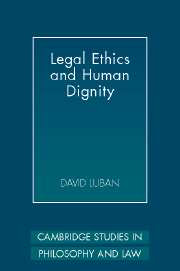
David Luban, Legal Ethics and Human Dignity (Cambridge Univ. Press 2007)

Ian Ayres, Super Crunchers: Why Thinking-By-Numbers is the New Way to be Smart (Bantam 2007)

Jack M. Balkin, James Grimmelmann, Eddan Katz, Nimrod Kozlovski, Shlomit Wagman and Tal Zarsky, eds., Cybercrime: Digital Cops in a Networked Environment (N.Y.U. Press 2007)

Jack M. Balkin and Beth Simone Noveck, The State of Play: Law, Games, and Virtual Worlds (N.Y.U. Press 2006)
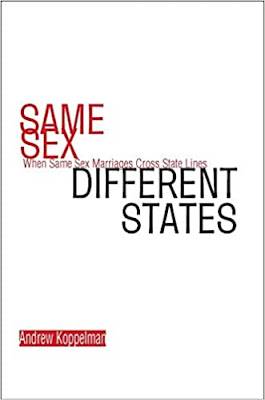
Andrew Koppelman, Same Sex, Different States: When Same-Sex Marriages Cross State Lines (Yale University Press 2006)

Brian Tamanaha, Law as a Means to an End (Cambridge University Press 2006)

Sanford Levinson, Our Undemocratic Constitution (Oxford University Press 2006)

Mark Graber, Dred Scott and the Problem of Constitutional Evil (Cambridge University Press 2006)

Jack M. Balkin, ed., What Roe v. Wade Should Have Said (N.Y.U. Press 2005)

Sanford Levinson, ed., Torture: A Collection (Oxford University Press 2004)
Balkin.com homepage
Bibliography
Conlaw.net
Cultural Software
Writings
Opeds
The Information Society Project
BrownvBoard.com
Useful Links
Syllabi and Exams